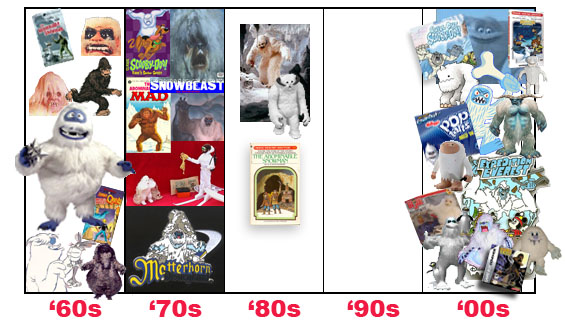
March 5, 2008
Even the Los Angeles Times is getting in step with the significance of cryptozoology. They have deemed, of all the programs being broadcast tonight, the following as their “Wednesday Highlight”:
YETI OR NOT? The Abominable Snowman is sought on the season premiere of “Destination Truth,” at 10 p.m. on Sci Fi.
This seems like an appropriate time, therefore, to bring up the issue of the “Evolution of Yeti” within popular culture. I’ll leave for another time a more formal discussion of the biological evolution of Yeti, and their place in the biological scheme of things. But how about the reflection merely of the imagery of Abominable Snowmen?
In conjunction with ongoing discussions with Henry Stokes, the creator of the thoughtful archival trendy site “I Love the Yeti,” I contribute my end of our bookend blogs.
Stokes has posted his good visual examination and overview of the popular appearance of what Abominable Snowmen (or Snowpeople) looked like from the 1960s through the present. Stokes puts forth a good summary of his thesis in this panel (below) of images in his “Yeti in Popular Culture.”

Henry Stokes introduces his thoughts thusly:
As you can see by this time-line, the Yeti hit it big in the 1960s – but by the 1990s was completely off the radar. In the current decade, he’s back and bigger than ever.
These are the Yeti’s biggest moments in popular culture in the last fifty years as I see them.
One visual impact you will immediately notice in Stokes’ collective assembly here is that most of the Yeti are white.
In mentioning some observations about the years before the modern view of the Yeti, I must go back centuries, but especially note the 1920s through the 1950s.
The traditions and folklore of the many cryptids of many names seen in eastern China, Tibet, Nepal, or even discussed as far away as in Mongolia, would not have been hindered by the incorrect translations that gave us the “Abominable Snowman.”
The views of the Yeti and other large cryptids of the mountain valleys and the foothills of the Himalaya were a mix of unknown hominoids and bears, no doubt. But as far as the appearance of these, they were rarely, if ever “white.”

Slowly, after the mountain climbing parties of Westerners tried to put some kind of face to these “Abominable Snowmen” of the Himalayas, they did not ~ in spite of the name ~ become “white” creatures. The extension of the sightings of brownish, dark reddish, and black-haired giant primates were reflected in the popular culture.
One of the earliest sightings to show up in Western literature retains the elements of how the Yeti was seen by the locals. In 1832, the Journal of the Asiatic Society of Bengal published British Resident at the Nepalese Court (1820-1843) B. H. Hodgson’s account of the Yeti in northern Nepal. His native bearers and guides spotted a tall, bipedal creature covered with long dark hair, which seemed to flee in fear. Hodgson did not see the creature, but concluded it was an orangutan.
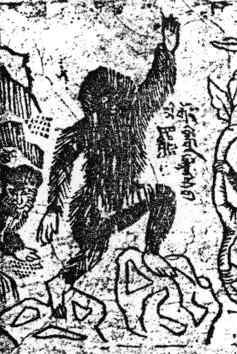
As you’ve probably read me saying before elsewhere, the phrase “Abominable Snowman” was not coined until 1921, the year Lieutenant-Colonel Charles Howard-Bury led the Royal Geographical Society’s “Everest Reconnaissance Expedition” that he wrote about in his book, Mount Everest The Reconnaissance, 1921.

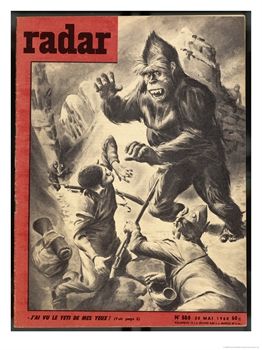
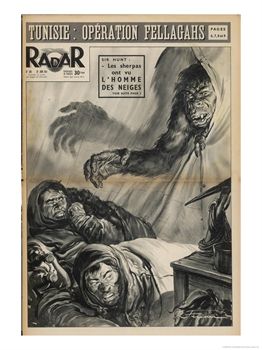
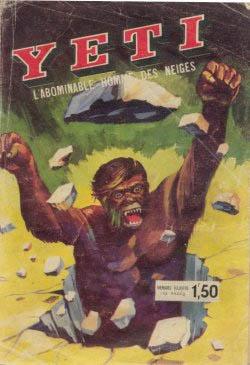
The Yeti does retain its dark coloring throughout most of the 1940s and early 1950s, as reflected from magazine covers and other popular cultural evidence.
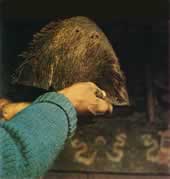
The Daily Mail expedition of 1954 brought back some of the first images of a Yeti skullcap, correctly identifying it was a local cultural icon created to represent what an actual Yeti scalp looked like. It reinforced the known color of the fur of the Yeti by using a serow skin.
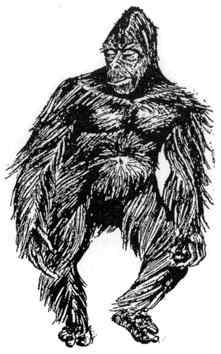
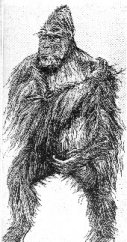
Bernard Heuvelmans’ Yeti drawings with his cryptozoology writings in the late 1950s, further continued the traditional dark image of “Abominable Snowmen,” against all odds.
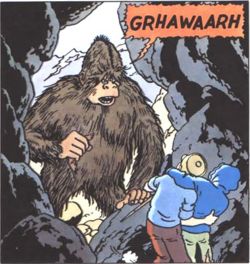
Even Tin-Tin in Tibet published in 1960, keeps the dark, hairy Yeti intact.
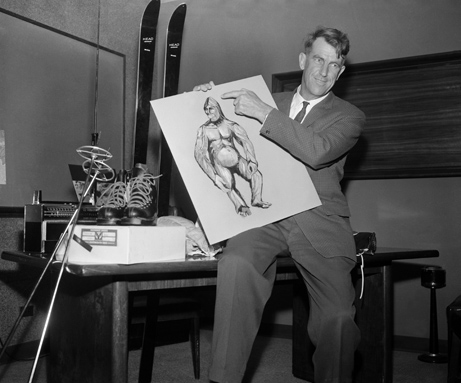
It is only when we move into the 1960s (after Sir Edmund Hillary’s debunking Yeti expedition) do we see the shift to the “white” Abominable Snowmen. Is this due to the establishment of a concrete-thinking postwar USA, where Americans’ insights in popular culture were viewed as the most important ones of the day?
Or is it merely a reflection of the worldwide popularity of the Bumble?
Yes, I am a firm advocate of the theory that the whiteness of the modern popular cultural icon the Yeti or Abominable Snowmen directly issues from the depiction of the “Abominable Snow Monster” or “The Bumble” in the oft-repeated Christmas TV classic Rudolph the Red-Nosed Reindeer.
The television debut of the “Bumble” within Rudolph the Red-Nosed Reindeer occurred on NBC in 1964, when Arthur Rankin, Jr. and Jules Bass produced their stop motion animated TV special. Rudolph the Red-Nosed Reindeer became an extremely popular hit and has been re-broadcast annually many times over the years, even after it was finally released on video and then DVD. It now airs several times during the Christmas season (usually on CBS rather than NBC), making it the longest-running TV special in terms of consecutive years.
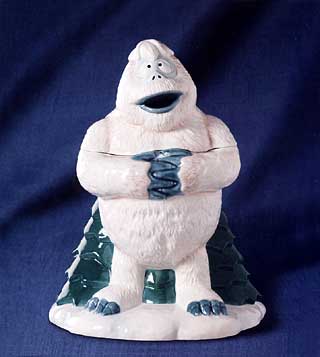
The ultimate Yeti collectible: The Bumble Cookie Jar.
Since the turn of the 21st Century, the white “Bumble” (a/k/a “Abominable Snow Monster”) has appeared in an explosion of ornaments, dolls, figurines, and other cultural artifacts, as we baby boomers have discovered every Christmas when we visit our local CVS and other pharmacies while picking up the high blood pressure medication orders.
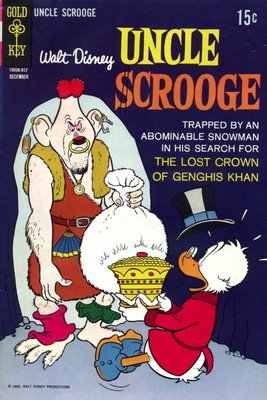
Some of the “white” Yeti have been downright silly, as with this “Uncle Scrooge” appearance.
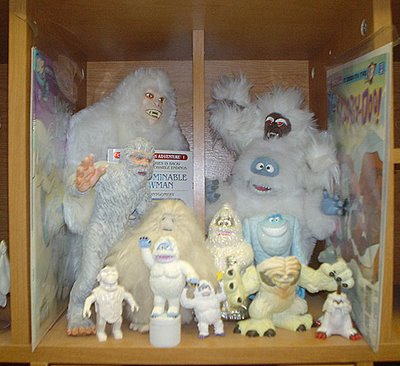
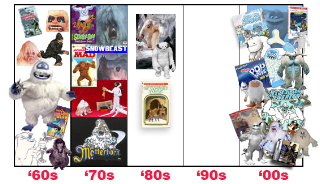
But before the modern era that Henry Stokes so graphically illustrates so often at his site, Yetis were darker, more gorilla-toned, and perhaps not as humorously ridiculous.

Perhaps.
About Loren Coleman
Loren Coleman is one of the world’s leading cryptozoologists, some say “the” leading living cryptozoologist. Certainly, he is acknowledged as the current living American researcher and writer who has most popularized cryptozoology in the late 20th and early 21st centuries.
Starting his fieldwork and investigations in 1960, after traveling and trekking extensively in pursuit of cryptozoological mysteries, Coleman began writing to share his experiences in 1969. An honorary member of Ivan T. Sanderson’s Society for the Investigation of the Unexplained in the 1970s, Coleman has been bestowed with similar honorary memberships of the North Idaho College Cryptozoology Club in 1983, and in subsequent years, that of the British Columbia Scientific Cryptozoology Club, CryptoSafari International, and other international organizations. He was also a Life Member and Benefactor of the International Society of Cryptozoology (now-defunct).
Loren Coleman’s daily blog, as a member of the Cryptomundo Team, served as an ongoing avenue of communication for the ever-growing body of cryptozoo news from 2005 through 2013. He returned as an infrequent contributor beginning Halloween week of 2015.
Coleman is the founder in 2003, and current director of the International Cryptozoology Museum in Portland, Maine.
Filed under Abominable Snowman, Breaking News, Comics, Cryptomundo Exclusive, Cryptotourism, CryptoZoo News, Cryptozoologists, Cryptozoology, Expedition Reports, Eyewitness Accounts, Folklore, Media Appearances, Photos, Pop Culture, Yeti